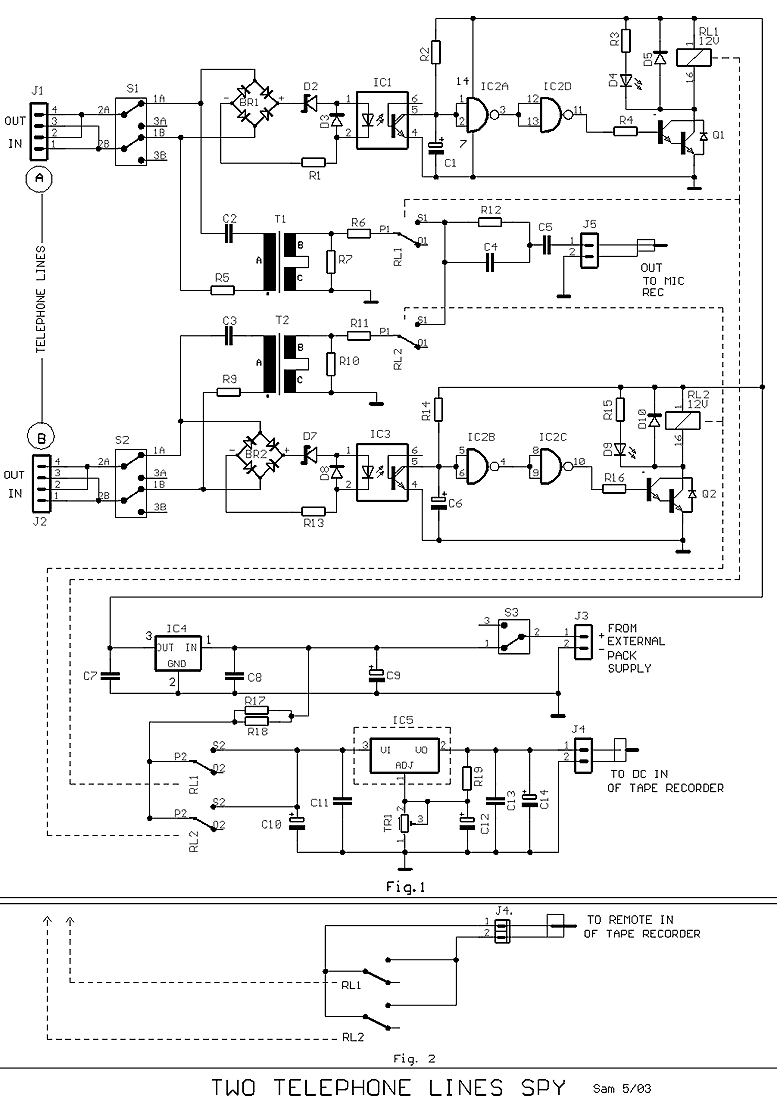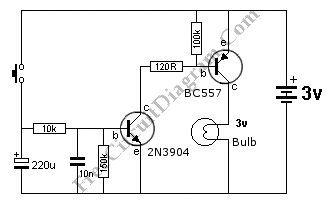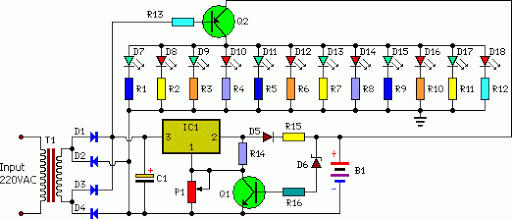
Slide Projector Auto Advance

A 4001 CMOS Quad NOR gate is configured as an astable multivibrator, which drives a simple differentiator and relay driver. Depending on the setting of S2, a delay of 5 to 30 seconds is generated. S2 and R1 through R6 can be replaced by a single 10-Mohm potentiometer, if desired.
The circuit utilizes a 4001 CMOS Quad NOR gate to create an astable multivibrator, which is a type of oscillator that continuously switches between its high and low states without requiring any external triggering. This configuration results in a square wave output, which can be used to drive subsequent components in the circuit.
In this setup, the output of the astable multivibrator is connected to a simple differentiator circuit. The differentiator serves to convert the square wave signal from the multivibrator into a pulse signal. This pulse signal is then used to activate a relay driver, which is responsible for controlling a relay. The relay can be employed to switch larger loads or perform other tasks as needed.
The delay in the circuit is adjustable and is determined by the setting of switch S2. The time delay can range from 5 to 30 seconds, allowing for versatile timing applications. The resistors R1 through R6 are part of the timing network and can be replaced by a single 10-Mohm potentiometer for ease of adjustment. This modification provides a more straightforward means of setting the desired delay, enhancing the circuit's usability.
The overall design is efficient and straightforward, making it suitable for various applications where a timed relay activation is required. The use of CMOS technology ensures low power consumption, which is beneficial for battery-operated devices. Proper implementation of this circuit can yield reliable performance in timing and control applications. A 4001 CMOS Quad NORgate is set up as an astable multivibrator, which drives a simple differentiator and relay driver. Depending on the setting of S2, a delay of 5 to 30 seconds is generated. S2 and Rl through R6 can be replaced by a single 10-Mohm pot, if desired.
The circuit utilizes a 4001 CMOS Quad NOR gate to create an astable multivibrator, which is a type of oscillator that continuously switches between its high and low states without requiring any external triggering. This configuration results in a square wave output, which can be used to drive subsequent components in the circuit.
In this setup, the output of the astable multivibrator is connected to a simple differentiator circuit. The differentiator serves to convert the square wave signal from the multivibrator into a pulse signal. This pulse signal is then used to activate a relay driver, which is responsible for controlling a relay. The relay can be employed to switch larger loads or perform other tasks as needed.
The delay in the circuit is adjustable and is determined by the setting of switch S2. The time delay can range from 5 to 30 seconds, allowing for versatile timing applications. The resistors R1 through R6 are part of the timing network and can be replaced by a single 10-Mohm potentiometer for ease of adjustment. This modification provides a more straightforward means of setting the desired delay, enhancing the circuit's usability.
The overall design is efficient and straightforward, making it suitable for various applications where a timed relay activation is required. The use of CMOS technology ensures low power consumption, which is beneficial for battery-operated devices. Proper implementation of this circuit can yield reliable performance in timing and control applications. A 4001 CMOS Quad NORgate is set up as an astable multivibrator, which drives a simple differentiator and relay driver. Depending on the setting of S2, a delay of 5 to 30 seconds is generated. S2 and Rl through R6 can be replaced by a single 10-Mohm pot, if desired.





